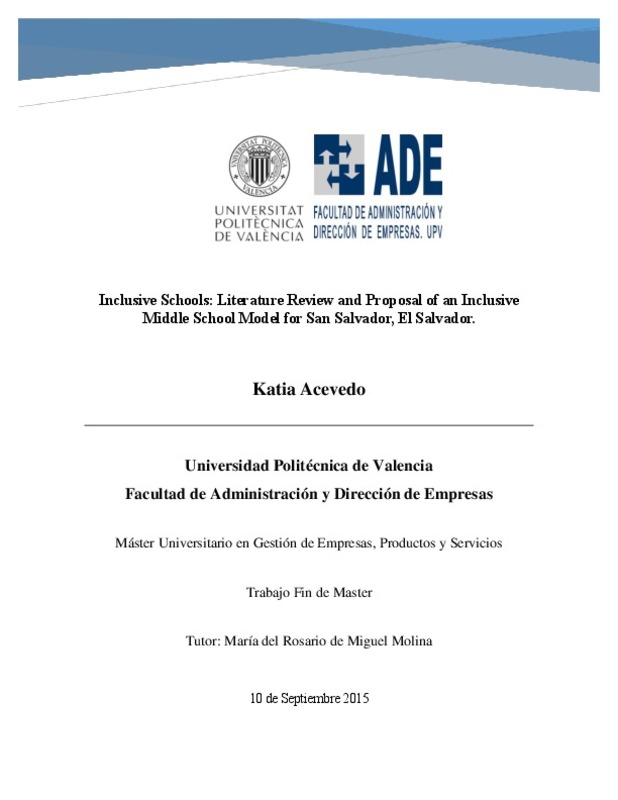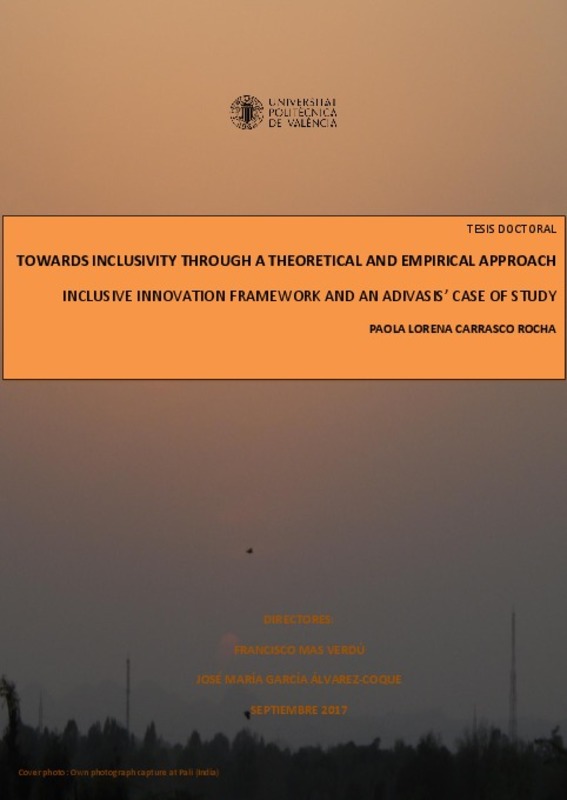JavaScript is disabled for your browser. Some features of this site may not work without it.
Buscar en RiuNet
Listar
Mi cuenta
Estadísticas
Ayuda RiuNet
Admin. UPV
Inclusive schools: literature review and proposal of an inclusive middle school model for San Salvador, El Salvador
Mostrar el registro completo del ítem
Acevedo Alas, K. (2015). Inclusive Schools: Literature Review and Proposal of an Inclusive Middle School Model for San Salvador, El Salvador. http://hdl.handle.net/10251/55538.
Por favor, use este identificador para citar o enlazar este ítem: http://hdl.handle.net/10251/55538
Ficheros en el ítem
Metadatos del ítem
| Título: | Inclusive schools: literature review and proposal of an inclusive middle school model for San Salvador, El Salvador | |||
| Autor: | Acevedo Alas, Katia | |||
| Director(es): | ||||
| Entidad UPV: |
|
|||
| Fecha acto/lectura: |
|
|||
| Resumen: |
[EN] The aim of this Final Dissertation (TFM) is to propose an improved model of inclusive
school for a city in El Salvador to support the economic development of the country
through education policies.
The work will ...[+]
|
|||
| Palabras clave: |
|
|||
| Derechos de uso: | Reserva de todos los derechos | |||
| Editorial: |
|
|||
| Titulación: |
|
|||
| Tipo: |
|
Localización
recommendations
Este ítem aparece en la(s) siguiente(s) colección(ones)
-
ADE - Trabajos académicos [3699]
Facultad de Administración y Dirección de Empresas









